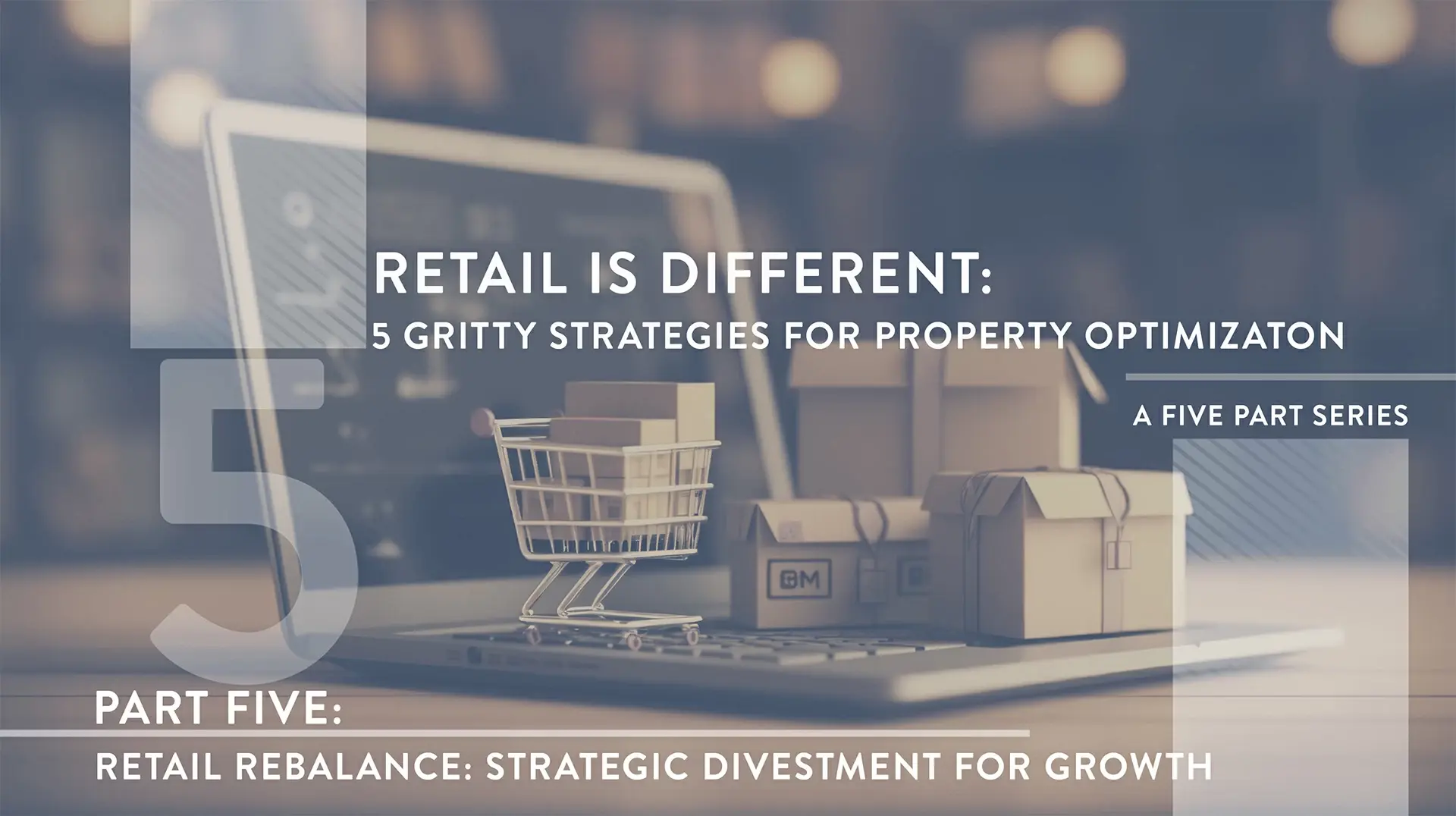This is Part 5, the final installment of our series, 'Retail is Different: 5 Gritty Strategies for Property Optimization.' Learn how strategic divestment of underperforming properties and reinvestment can unlock growth potential and strengthen your retail portfolio. To see Part 4 click here.
With national chains that are operating 100s or 1000s of locations, not every property will be a winner. Some locations, despite initial promise, underperform or no longer align with the broader growth strategy. Knowing when to divest from these properties—and how to reinvest capital in more promising opportunities—is critical for long-term success.
The decision to divest from underperforming properties requires a deep understanding of property performance, asset management, and market conditions. Retailers need tools that provide data-driven insights and a clear picture of which assets to keep and which to let go.
The Grit Factor: Making Tough Calls for Strategic Growth
Retailers must have the grit to make difficult decisions about divesting from underperforming locations. Letting go of a property can be tough, but it’s necessary to free up capital for reinvestment in higher-growth opportunities. Unlike commercial properties, where long-term leases provide predictability, retail properties can become liabilities if they fail to meet performance expectations.
A regional retailer, for example, may find that several stores are no longer aligned with its growth strategy due to changing demographics or market conditions. To stay competitive, divestment from these properties and reinvestment in other locations with better growth potential is a common course of action.
How Retail Property Optimization Platforms Enhance Operational Efficiency
A Retail Property Optimization platform provides retailers with the insights they need to make smart divestment decisions. By combining performance data with immersive asset viewing, retailers can assess properties holistically and make informed decisions about where to divest and reinvest.
- Performance Data Aggregation: RPO platforms consolidate data on property performance, allowing retailers to identify underperforming locations. This helps retailers make data-driven decisions about which properties are no longer contributing to overall growth.
- Asset Condition Assessment: Using the immersive digital twin, facility managers can remotely inspect assets such as HVAC systems, signage, and building infrastructure. This visual assessment provides additional insight into which properties require costly upgrades and which are ready for divestment.
- Reinvestment in High-Growth Locations: Once divestment decisions are made, RPO platforms help retailers reinvest capital into more promising properties. By identifying high-growth stores-based performance data, retailers can maximize returns and position their portfolios for long-term success.
Real-World Example:
A regional shoe retailer uses its RPO platform to evaluate properties for divestment. The platform aggregates performance data across locations, helping to identify underperforming stores. Locations with inefficient HVAC or non-compliant systems are flagged for potential divestment, and the digital twin allows managers to remotely inspect assets before making final decisions. By divesting from underperforming properties and reinvesting in higher-growth stores, the retailer positions itself for long-term portfolio profitability.
Practical Steps for Retailers
To maximize efficiency in daily operations, retailers should:
- Step One: Use RPO Platforms to aggregate performance data and identify which locations are underperforming.
- Step Two: Leverage digital twin technology to inspect assets and assess property conditions before making divestment decisions.
- Step Three: Reinvest capital strategically in high-growth areas based on data insights, ensuring future portfolio profitability.
Thriving Through Strategic Growth
Retail success is not just about acquiring and managing properties—it’s also about knowing when to let them go dark. By leveraging RPO platforms, retailers can make smart, data-driven decisions about divestment and reinvestment. The grit to make these tough calls is what positions retailers for long-term success, allowing them to build stronger, more profitable portfolios.
Thank you for following our series, 'Retail is Different: 5 Gritty Strategies for Property Optimization.' By mastering change, leveraging data, maintaining brand consistency, streamlining operations, and making smart divestment decisions, your retail chain can thrive in today’s challenging environment. Stay tuned for more insights into retail property optimization.

